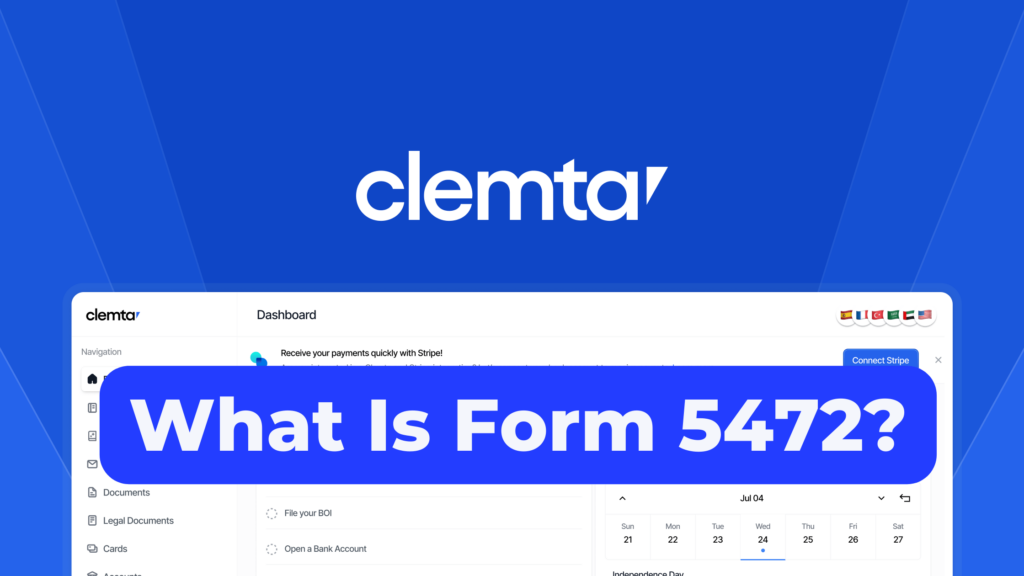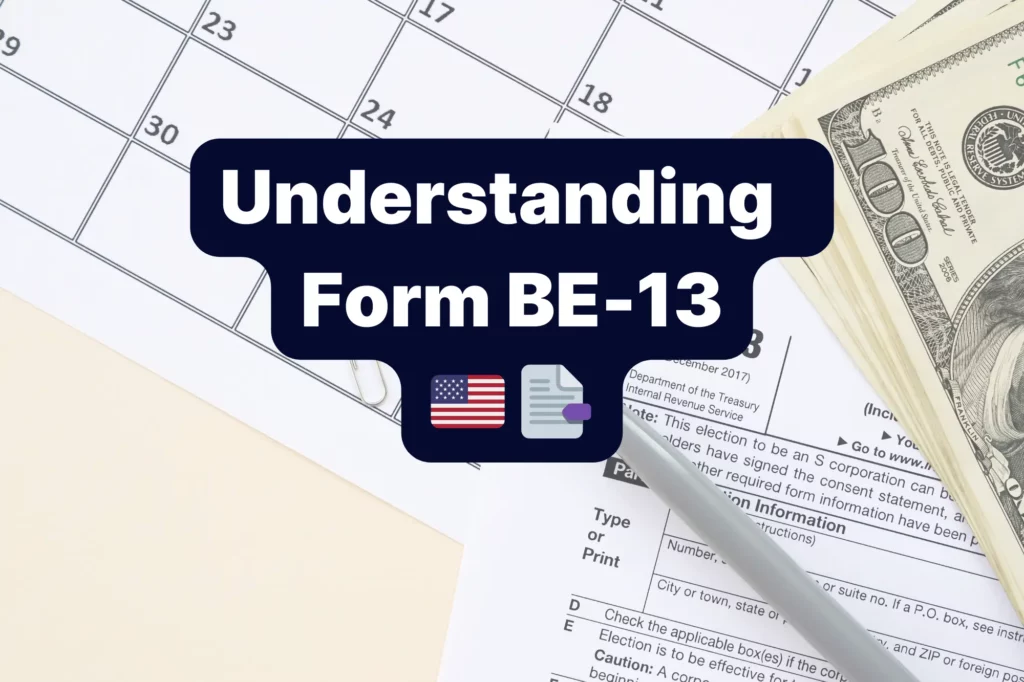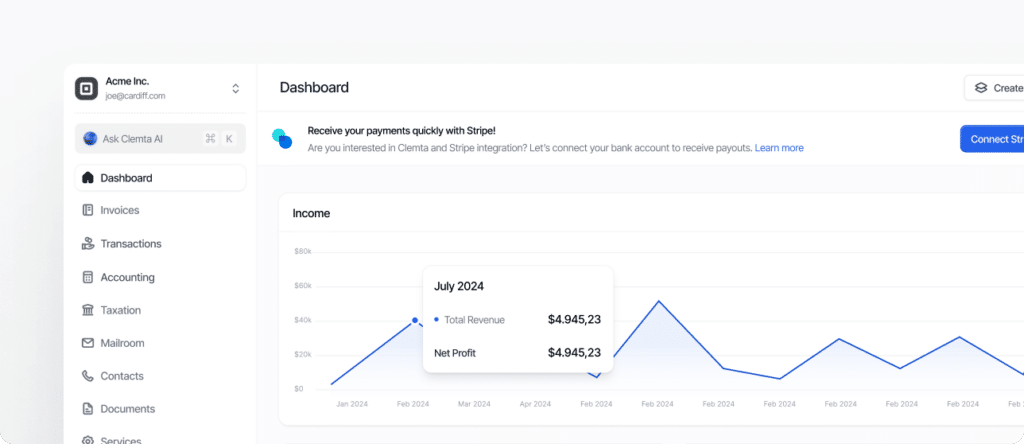You have decided that it’s time to learn how to set up an Amazon seller account, the largest e-commerce platform with a wealth of different benefits. It may seem like a difficult and tedious job, but Clemta can walk you through the appropriate steps to become a seller on Amazon. Here are things you should consider to start as an Amazon seller!
Starting a business in the US consists of several complex and bothersome tasks and bureaucratic procedures. With our comprehensive services, you can create your business with your Amazon Seller account and start making a profit without even leaving your country!
1. Choose a plan for selling your products
2. Identify a business model
3. Decide on a fulfillment method
4. Sell the right products
5. Set up an Amazon seller account
6. If you are not a US citizen or resident
1. Choose a plan for your Amazon seller account
Amazon offers two sales plans: the Individual Plan and the Professional Plan. Before you think about signing up for your Amazon seller account, consider what these plans offer and which one better fits the type of seller you want to be. Remember that you can switch from one to the other anytime, so your first choice is not a forever decision.
The plans are as follows:
a) Individual Plan
The ideal candidate for the Individual Plan is someone new to online selling and plans to sell 40 or fewer items per month. Sellers interested in the Individual Plan usually do not need or want access to advanced selling tools because they may not yet know what they will be selling.
With the Individual Plan, you do not have access to the Professional Plan’s inventory management features. Still, with less than 40 items per month, you may not need these features until you grow your business. The Individual Plan costs $0.99 per sale.
b) Professional Plan
The Professional Plan is for the more extensive, experienced merchant who wants to sell more than 40 items per month and knows what they will sell. This seller has or wants the personas specified by APIs and fully developed sales reports. With the Professional Plan, you can use inventory and order management tools.
With the Professional Plan, you can take advantage of Amazon’s promotions, gift services, and other special listing features. You also get access to the Amazon Market Web Service for uploading, receiving reports, and using API functions. Finally, only professionals can have sales tax automatically collected on their sales. The Professional Plan costs a monthly fee of $39.99.
2. Identify a business model
There are thousands of products you can sell on Amazon. This means that different business models work better for some products than others. This means that you need to know exactly the products you want to sell and the business model that works best.
Amazon offers several business models, including:
a) Retail arbitrage: In retail arbitrage, you buy low and sell high. In retail arbitrage, you earn on the markup and usually have to search outlets or malls for items on sale and sell them for more money.
b) Online arbitrage: Similar to retail arbitrage, online arbitrage is done online instead of searching for bargains in outlet malls and flea markets.
c) Wholesale: In the wholesale model, you buy products in bulk directly from the manufacturer and maintain your inventory. This is much more expensive than any of the arbitrage models.
d) Private label: The private label business model requires you to buy unbranded products from a manufacturer and pass them off as your own. Again, this requires you to maintain a reasonably large inventory and perhaps have more sales skills and knowledge than average.
e) Dropshipping: You sell a product on behalf of a manufacturer, and the sale is returned to the manufacturer for fulfillment and delivery.
f) Handmade: Like an Etsy account, the handmade business model allows you to sell the goods you make. This requires marketing skills and the ability to make your sellable product. It is Amazon’s least popular business model.
3. Decide on a Fulfillment Method
Amazon offers three basic fulfillment methods, which are the shipping of sold items to customers. The first is Fulfillment By Amazon (FBA), which is for sellers who do not have room for their inventory. Also, Amazon FBA shipping automatically qualifies your products for Prime shipping.
Note: Packages do not carry your name, can not be branded with your branding, and Amazon may charge expensive fees to store your inventory.
Another fulfillment method is Fulfilled By Merchant (FBM). This method is for sellers who can manage the fulfillment process themselves, want to customize their packaging, and have space for their inventory. It can be cheaper, but the logistics of order fulfillment can be time-consuming.
Finally, Seller Fulfilled Prime works with a third-party fulfillment partner (3PF). This uses a third-party provider but allows you to customize and use Prime shipping.
Amazon and other third parties provide software to help you find a product you want to sell or verify that the product you want to sell is a good seller. Numerous product research tools can help you find lucrative items for sale. Fashion, books, home, garden, and video games are all great categories in which you can sell products. When choosing products to sell, it’s essential to heed tips for pricing Amazon products, such as performing a competitor analysis.
4. Sell the right products
Amazon and other third parties provide software to help you find a product you want to sell or verify that the product you want to sell is a good seller. Numerous product research tools can help you find lucrative items for sale. Fashion, books, home, garden, and video games are all great categories in which you can sell products. When choosing products to sell, it’s essential to heed tips for pricing Amazon products, such as performing a competitor analysis.
5. Set up an Amazon seller account
Once you have decided on your business plan, business model, fulfillment method, and product line, it is time to learn how to set up an Amazon seller account. Make sure your country is eligible before you begin; not all are. Then prepare the following:
• Business email address or Amazon customer account
• Internationally charged credit card
• A government-issued identity card – proof of your ID (passport, national ID, driver’s license)
• Tax information
• Phone number
• Bank account
Once you’re ready, follow these steps:
Choose between the Individual and Professional Plan and enter your business email address. Then select “Create a new account.” Enter your business location (the country where you will be working) and your business type. After that add your name (if you are an individual) and your contact information, credit card information, and ID information. Finally, you will be asked for personal information, some of which will be the same as in the previous step.
The next step is to provide Amazon with your billing information, including your current bank account and credit card numbers. The bank account must be able to send and receive money from Amazon. Click “I understand” and go to the next page. There you will learn how to verify your bank account.
After your credit card information is entered into the system, you will be asked for more details about your business. In this step, enter the name of your store, whether you use UPCs (barcodes) for your products, whether you use diversity certificates, and whether you own or manufacture your products. If you have, you will be asked for your trademarks.
Now, you will need to upload images of your government identification documents. This will allow Amazon to verify your identity. After uploading, click “Submit.” In the next step, you will need to reconfirm your business address. After this confirmation, the system will send you a postcard with a code. Once you receive it, enter the code into your account, and your Amazon seller account is ready to use.
6. If you are not a US citizen or resident
If you will sell on the US market and you’re not a US citizen or resident, you will need professional help. This is because you need to open a business account instead of an individual account. To do this, you will need a company in the country where you will be doing business.
Here are the things you need:
• US company (most preferably Wyoming LLC)
• US business address
• US bank account
• Internationally charged credit card
• Passport
The following are the steps you need to take once you’re ready:
Select the United States as a business location and privately-owned business for the business type. Write your company name as it appears in the official records. (e.g., BRAND, BRAND LLC, OR BRAND, LLC.) Then confirm and continue.
Again, re-write your company’s name as you did in the previous step. After that enter the registration number on your incorporation document and the address you received for your business.
For verification, you must register a valid phone number that belongs to you and that you use in your daily life. You can also verify with your phone number in your country of residence.
In the next step, write our personal and passport information for verification. Then, re-enter the address and phone information. While marking the beneficial owner as the primary contact person, please mark “Yes” and confirm that you have added all beneficial owners.
You need a US bank account for Amazon to pay you. Therefore, you will provide your bank account information at this stage. For the account holder’s name, choose the name of your business. Then under the bank options, select “Other” and write Mercury* in the box. Afterward, please enter your account numbers and submit them for verification.
Once Amazon verifies your bank account, you can enter your billing and store information and start selling on Amazon US.
You can get help for your Amazon seller account
We are happy to inform you that Clemta offers customized services if you want to open an Amazon US account! US company formation (LLC&C-Corp), bank account, business address and phone number, EIN/ITIN, accounting, and taxation are among the services you will need throughout the way.
After the formation is complete, we will apply for your EIN, which is required for your tax filing obligations. We will apply for your EIN and help you process your tax payments once the tax season begins.
When it comes to banking, we have two banking partners through which we can help you get a bank account. You just need to fill out our bank account application form, which takes two minutes. It’s that simple!
*Mercury is a financial technology company, not a bank. Banking services are provided by Choice Financial Group, Column N.A., and Evolve Bank & Trust; Members FDIC.







